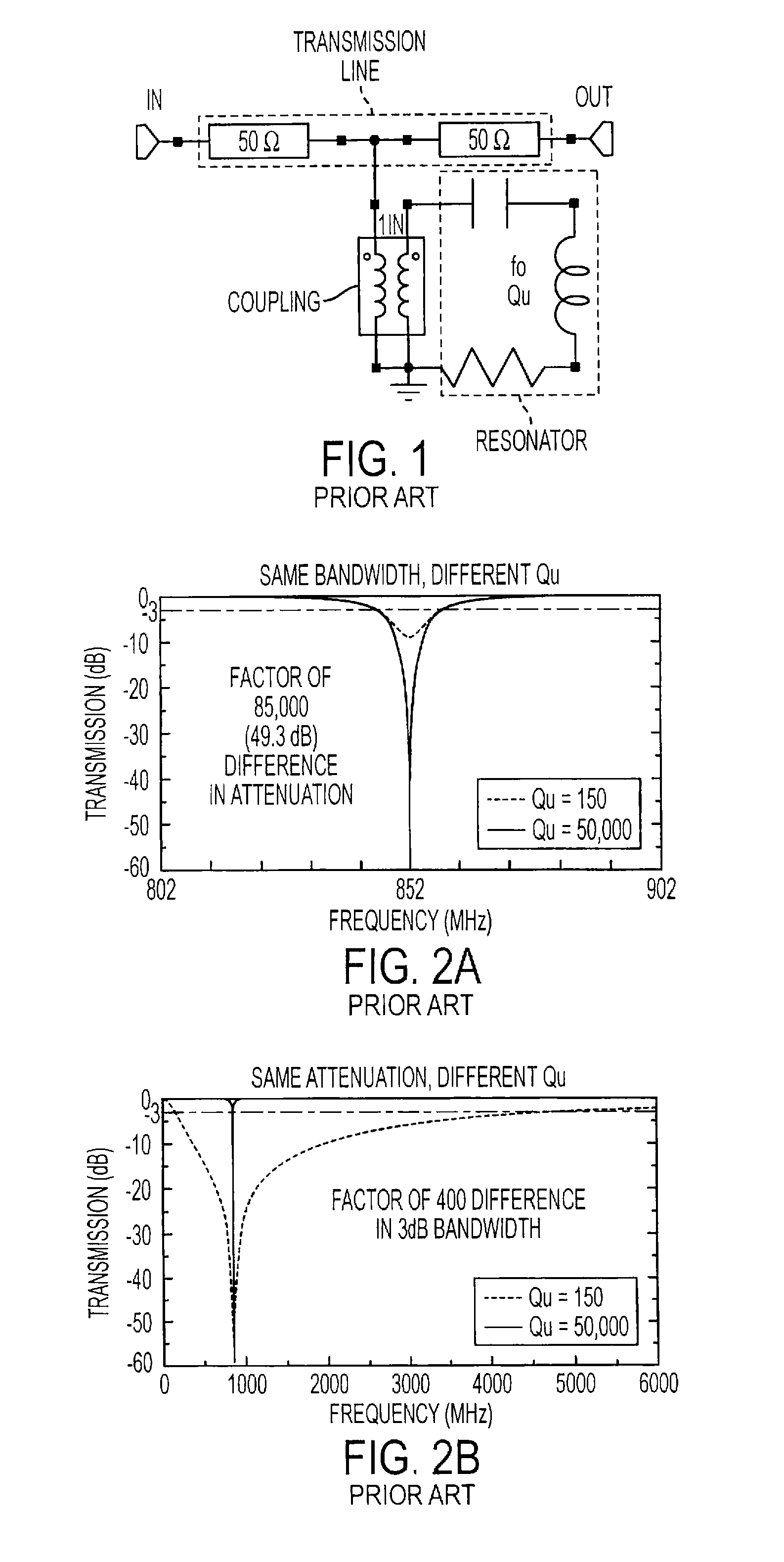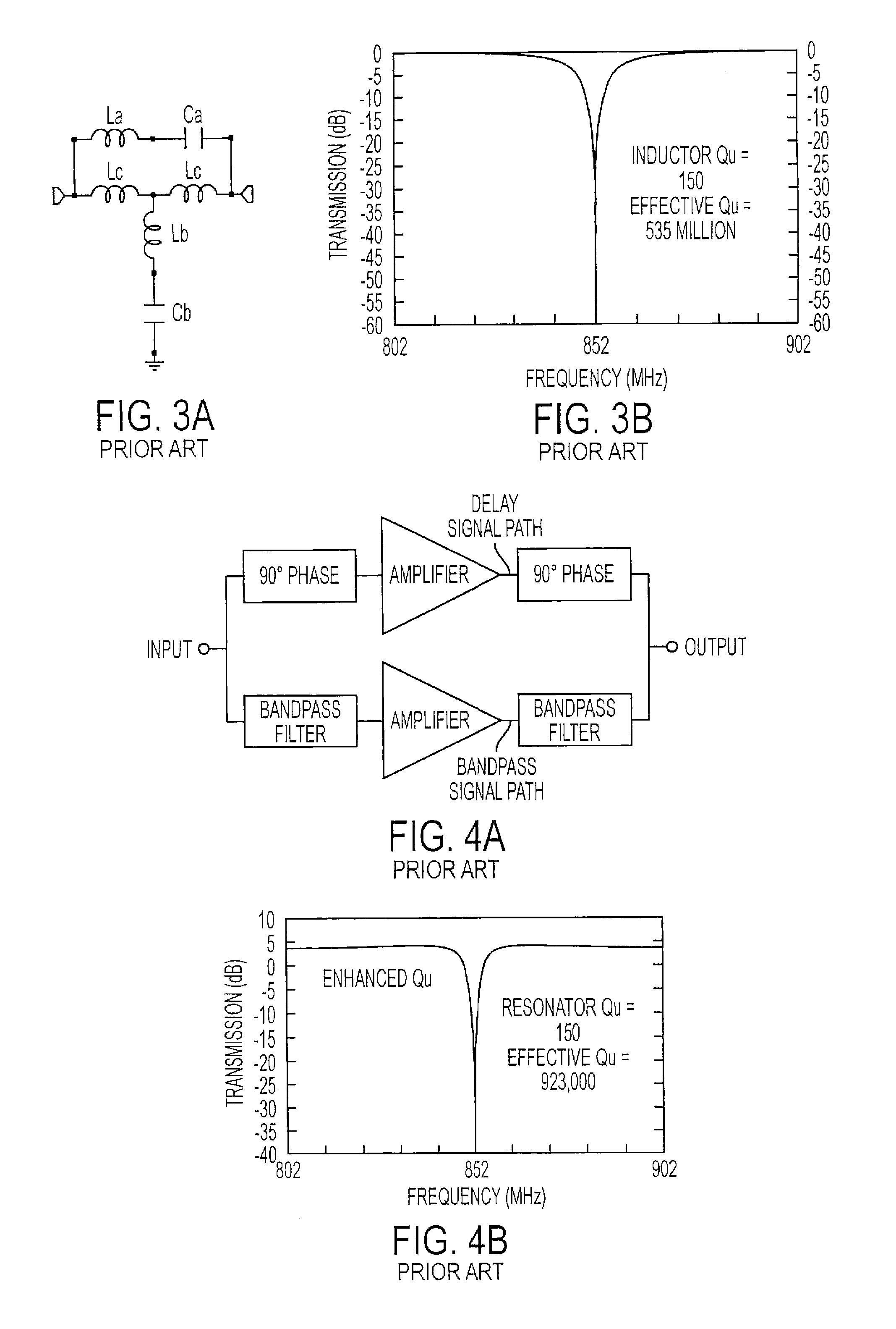Narrow-band absorptive bandstop filter with multiple signal paths
a narrowband absorption and signal path technology, applied in the field of notch filters, can solve the problems of narrowband absorption, small maximum attenuation, lower filter selectivity, etc., and achieve the effect of broadening the attenuation characteristics and maintaining the attenuation characteristics
- Summary
- Abstract
- Description
- Claims
- Application Information
AI Technical Summary
Benefits of technology
Problems solved by technology
Method used
Image
Examples
embodiment 1200
[0220]As an example, the performance of a fourth-order filter (with eight resonators), comprised of a cascade, according to invention embodiment 1200 of FIG. 38a, of two of the passive biquad subcircuits 700 of FIG. 21a, was analyzed with a microwave circuit simulator. The cascaded network 1200 was designed to achieve a stopband width of 10 MHz at a center frequency of 2 GHz (γ=0.5% relative stopband bandwidth) and a minimum stopband attenuation of 45 dB using resonators with Qu=200 (the approximate Qu of 87 Ω microstrip resonators on a 1.5 mm thick Rogers RO4003C substrate). The impedance inverter 706 was implemented using a quarter wavelength lossy microstrip transmission line. The simulated performance of the two individual passive biquad subcircuits 700, together with that of the fourth-order cascade 1200, is shown in FIG. 25. For comparison, a “conventional” quasi-elliptic eighth-order bandstop filter was also simulated. Its eight resonators also had Qu=200 and were coupled to ...
embodiment 10
[0231]Further, it will also be appreciated that the teachings of the previously referenced U.S. Pat. No. 5,781,084 with respect to the design and synthesis of one-port reflection-mode filters including a ladder network of resonators having progressively reducing Q values can be applied to the design and synthesis of the one-port admittances Yp 26 and Ym 28 of filter embodiment 10 as shown in FIG. 5c.
PUM
 Login to View More
Login to View More Abstract
Description
Claims
Application Information
 Login to View More
Login to View More - R&D
- Intellectual Property
- Life Sciences
- Materials
- Tech Scout
- Unparalleled Data Quality
- Higher Quality Content
- 60% Fewer Hallucinations
Browse by: Latest US Patents, China's latest patents, Technical Efficacy Thesaurus, Application Domain, Technology Topic, Popular Technical Reports.
© 2025 PatSnap. All rights reserved.Legal|Privacy policy|Modern Slavery Act Transparency Statement|Sitemap|About US| Contact US: help@patsnap.com



